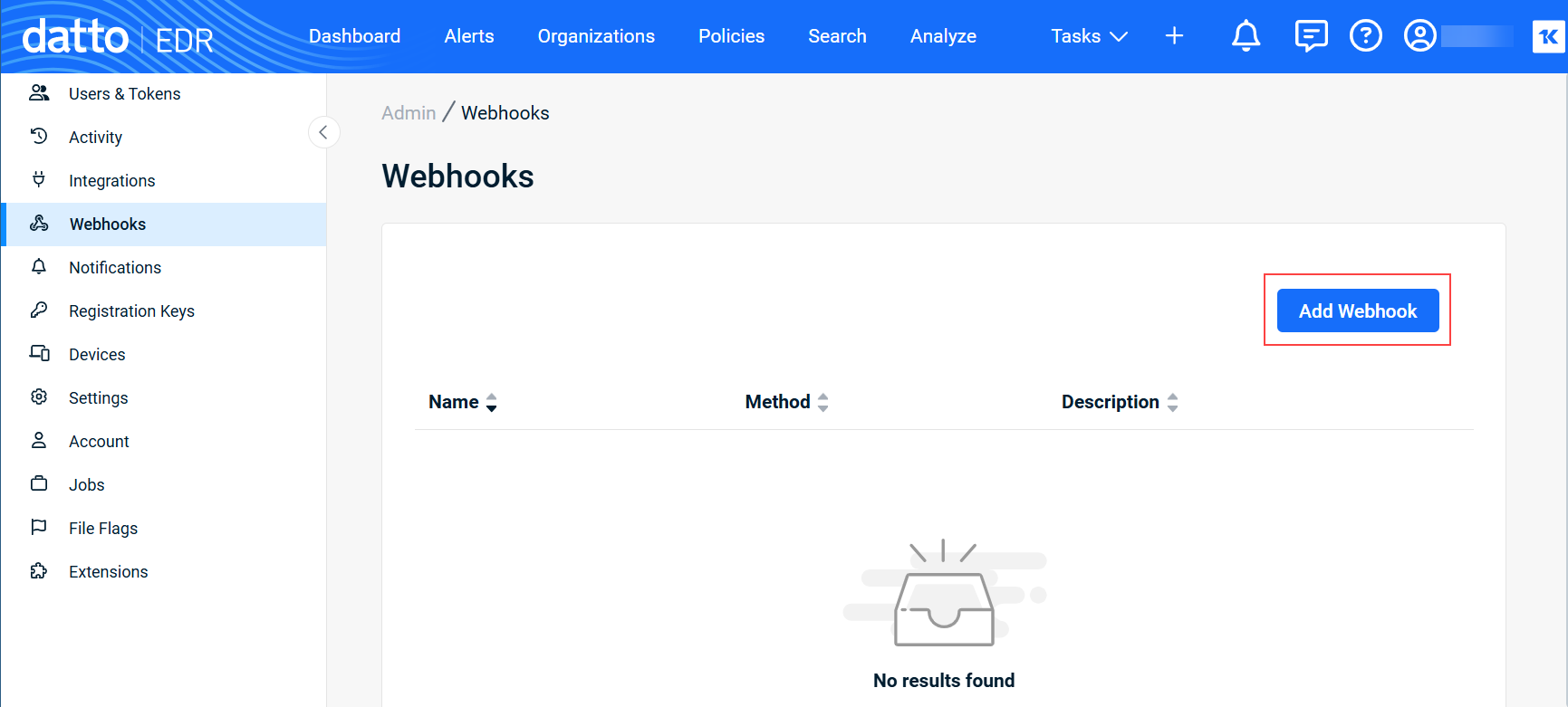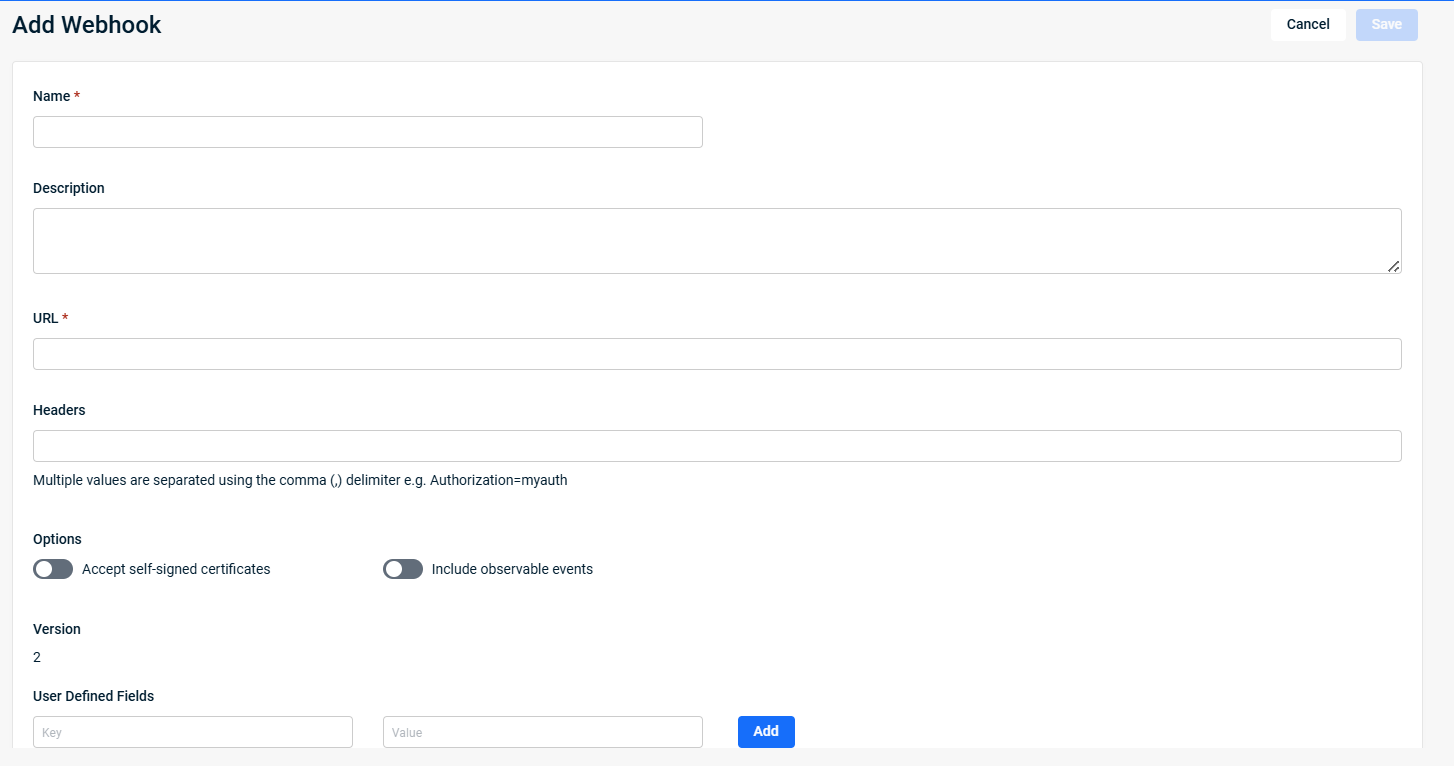Creating Datto EDR webhooks
PERMISSIONS Service account or administrator-level rights on the target endpoint
You can configure Datto EDR to send webhook notifications to any platform that can receive them. This article explains how to create and configure them.
NOTE For information about how to receive webhook notifications in a third-party application, contact the corresponding vendor for support.
About webhooks
Webhooks are an efficient way to exchange information between applications.
Traditional API calls provide information in response to a query. To get updated information via an API call, you must keep polling the application.
EXAMPLE "Were any new threats detected in my environment since the last query?
Were any new threats detected in my environment since the last query?
Were any new threats detected in my environment since the last query?..."
Imagine that only 2% of the time, you receive a positive answer. All that network traffic, so little to show for it.
Webhooks, on the other hand, work on a "Don't call me, I'll call you if I have something new" basis. The server-side application calls the client-side application (by invoking a client-provided webhook URL) any time that the server-side has something new to report to the client. When an event happens, a notification routes to any registered subscribers in the form of an HTTP POST request. The information (or 'payload') arrives in JSON format on port 443.
EXAMPLE "An audit revealed a new threat in your environment, and here is the endpoint name, IP address, threat type, reputation information, and risk."
You can use webhooks to notify you of nearly all of the same information you can find on the Alerts page in the EDR UI, including the following critical data points:
- Originating EDR instance of the alert
- Threat type
- Threat weight
- Impacted hostname
- File name of the threat object
- Malicious or non-malicious
You can also use external ID fields or user-defined reference fields for reliable data mapping. You can always include them in the payload, even if you have not updated them.
Datto EDR webhooks can and should be created by administrators and vendors who are building integrations with the platform, and vendors who are building connectors to middleware products.
Using webhooks instead of regular API calls can lead to a significant reduction in the number of inbound calls against our API platform, which will increase performance for all API users. But there are significant advantages for the integration developer as well. Webhooks enable you to design applications differently than a polling application, and you can often implement them with less coding. Webhooks for actions like creating and updating can be specific to that action. With the polling approach, code must handle checking for a large number of records, often caching data and comparing fields to determine what has changed. With webhooks, developers can build integrations faster and for a lower cost.
Additional advantages:
- Near real-time notifications: The speed with which you can discover that a threat was detected can be limited by polling time intervals. Webhooks provide almost instantaneous notification of threat activity.
- Reduced risk of hitting API thresholds: Your risk of reaching any applicable maximum API call thresholds becomes reduced without the need to do polling.
Prerequisites
Before you can use webhooks, you'll need to ensure that the following prerequisites are met.
Your company will need to set up the following pieces of infrastructure:
- A web service that will receive and process any webhook callouts from Autotask.
- A webhook URL to which the webhook payload will post.
Both items are required to create webhooks.
TIP You can use a service like RequestBin.com while you are creating and testing your webhooks.
Datto EDR can send extensive amounts of detail about each threat it identifies. You'll construct your alerts by using body variables. Determine the level of information you'd like to send to your recipient platform in each alert and how you will parse that information. A complete list of supported body variables is available at the bottom of the  > Admin > Webhooks > Add Webhook page.
> Admin > Webhooks > Add Webhook page.
Getting started
To create webhooks, perform the following steps:
| Revision | Date |
|---|---|
| Deleted Body variables section. Updated screens. | 8/7/25 |






